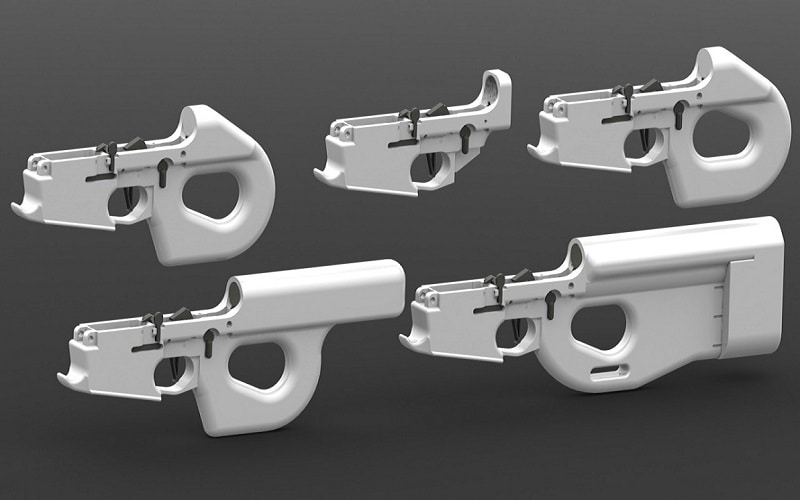They Said It Would Never Happen. It Happened. Now What?
3D-Printed Guns were something of tabloid discussion for a while. The topic existed ever since the onset and popularization of 3D Printers, but was by many too theoretical of a topic to be considered a real problem – something akin to the silly, theoretical question of, “What if 3D Printers print more 3D Printers and take over the world?”
But the time for jokes has ended: Through multiple advancements in printing and modeling technology, the 3D printed gun is not just a reality, it’s a fairly serious one. Here’s everything you need to know to understand what’s going on:
- 3D Printed Guns Are Real.
They’re real, they can be printed, and they really work. Like most things that can be 3D printed, gun models have been posted up on several 3D modeling websites in file formats that can be read and processed by advanced and capable printers. These printers and the ‘ink’ they require is pretty expensive, but not expensive enough to make the printing of a weapon unfeasible, especially since these weapons can be printed somewhat discreetly.
Don’t expect that to stay true for long, however. As this issue becomes more and more popularized, many sites that commonly host 3D printed models may look to place official restrictions on models of guns. This won’t make those models impossible to gain – it is the internet, after all – but it will make the process a bit more difficult.
2. 3D Printed Guns Can Be Untraceable.
This is one of the biggest problems at play here. The Undetectable Firearms Act of 1998 requires every constructed firearm to be outfitted with enough metal so that it cannot be made to pass through a metal detector.
As such, Defense Distributed, the company that is responsible for the creation of most (if not all) of the high-quality 3D Printable weapon models currently online, has required that the user place a 1.19×1.19×0.99″ block of steel into a preset compartment of the weapon’s frame. After the block has been placed, a bit more printing will render the block an integral part of the firearm, and removal or attempted removal of said block would almost certainly break the weapon.
But there’s a problem here – Although failing to place the block in the gun will render it an illegal weapon, there are ways to ensure the gun still functions without it, such as replacing the steel block with a block of another material. In fact, some models function with nothing but air in the block’s compartment, technically making it easier to build an illegal, undetectable firearm capable of slipping through metal detectors than to build a legal one.
3. You Don’t Need A Permit.
Once again, when it comes to 3D Printed guns, the illegal option is much more intuitive than the legal one. The issue here is pretty obvious – it’s not hard to print a gun without signing up for a legal permit…You just print the gun and use it.
However, the firearm will not function without some outside parts, such as a metal firing pin, so it may be these parts that are soon placed under restrictions to attempt to dissuade those who seek to acquire illegal firearms.
4. It’s dangerous.
What is a gun? On its most basic level, it’s a small, controlled explosion that will propel a small projectile down a directed path. Sounds easy enough in theory, but if built incorrectly, the projectile could fail to safely leave the barrel. This can result in a number of types of malfunctions, many of which could potentially be very harmful to one’s personal health.
Now consider this 3D Printed gun is being made out of 3D Printed material – AKA plastic – AKA not the best material to expose to a high-pressure explosion. There’s a lot of room for error here, and if one fails to use high-density plastic or construct the weapon properly, they could pose just as serious a threat to themselves as they could to others.
5. You Only Get One Shot.
As mentioned above, the gun is made of plastic. Plastic melts. And guns rely on a lot of very complex internal components to work properly. This means all that work – the slow printing process, acquisition of parts, building of the firearm, the work to enable legal ownership – will be need to be re-done as soon as the firearm is used. For now, at least.
We’re still in the early days of 3D printing, and the technology has moved ahead leaps and bounds since its original invention. Someday, we may reach a point where weapons can withstand multiple firings. Or, manufacturers may wisen up and create weapons that allow for easy replacement of most of the destroyed internals – basically a replacement of the core of the weapon similar to how common firearms cycle clips of ammunition.
However, as this issue continues to heat up (no pun intended) for printer enthusiasts and non-enthusiasts everywhere, expect these guns to get hit with the legal hammer pretty soon. And when the lawmakers begin to open fire (pun intended) on these insta-guns, we might see them disappear from relevance just as quickly as they came.




































Alyssa
August 20, 2018 at 2:31 am
This is scary, we need to set limits to these